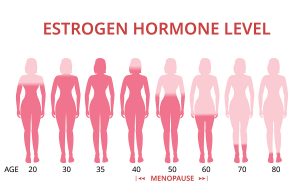On June 10, 2019 researchers published a paper that stated that three simple steps would prevent strokes and heart attacks. Heart disease is the leading cause of death for both men and women. In the US about 610,000 people die of heart disease every year, which is about in every 4 deaths. Here are a few facts. First, there is the simple observation that patients do not control their high blood pressure enough to avoid a heart attack or stroke. Secondly, patients with high blood pressure need to restrict their salt intake, or they will develop heart attacks or strokes. Finally, patients need to avoid exposure to artificial trans fatty acids as this leads to direct damage of the lining of the arteries. Given enough time, this will cause heart attacks and strokes.
Impact of these three health measures
The researchers went to global data to obtain mean blood pressure readings for large populations. They also obtained data for sodium consumption and trans fatty acid intake this way. Data from pharmacies crosschecked the amount of dispensing of anti hypertensive medication prescribed by physicians. The authors used most recent Meta analyses for relative risk reduction for each intervention.
Treating hypertension aggressively in up to 70% of cases with high blood pressure would delay 39.4 million deaths over 25 years. At the same time reduction of salt intake by 30% would prevent 40 million deaths over 25 years. And finally, eliminating trans fatty acid would delay another 14.8 million deaths. A total of 94.2 million deaths would be prevented globally when all the three interventions are applied simultaneously.
The pathophysiology behind heart attacks and strokes
We need to understand why patients develop heart attacks and strokes. In the following I will explain this.
Elevated blood pressure
When blood pressure is high, the heart has to work overtime to pump the blood through the blood vessels. At the same time the higher pressure leads to inflammation of the lining of the arteries and LDL cholesterol and triglycerides are deposited underneath the lining of the arteries. This leads to blockage of the smaller arteries, which translates into heart attacks and strokes.
Consumption of too much salt
Consumption of too much salt, namely sodium intake of more than 2300 mg a per day, is considered high. It can cause high blood pressure, heart attacks, strokes and aneurysms (pouches of arteries that can rupture). Sodium intake of 1500mg or less is considered normal. When you exceed that number, the body will retain sodium and water, which increases the blood pressure. This accelerates the process of hardening of the arteries and eventually causes heart attacks or strokes.
Hydrogenated fatty acids or trans fats
Hydrogenated fatty acids or trans fats still make their way into the grocery shopping basket. They are present in baked goods, snacks like chips, creamer and margarines. Think of cakes and cookies, crackers, piecrust, potato chips, corn chips and microwave pop corn. Deep fried food is also full of trans fats (french fries, doughnuts, fried chicken). Trans fats can make their way into frozen pizza crusts, non-dairy coffee cream, canned biscuits and cinnamon rolls. Above all do not buy any form of margarine. Hydrogenated fatty acids affect the arteries directly by increasing the harmful LDL cholesterol and decreasing the protective HDL cholesterol. This accelerates hardening of the arteries, which in turn causes heart attacks and strokes.
Discussion of “three simple steps would prevent strokes and heart attacks”
The positive impact that this new study could have on the survival of patients is phenomenal. Over 25 years almost 100 million lives would be saved from heart attacks and strokes, which would be an enormous achievement. We are talking about 25 cities of 4 million people each saved around the planet. The researchers say that this is doable, because there are pockets globally where excellent care has already been given to patients, they have followed them through 25 years or more and their mortality was significantly reduced.
My own experience in general practice
In my own medical practice from 1978 to 1995 I introduced a recall for patients with high blood pressure to reduce their mortality. They came in every 3 months for a blood pressure check. On that occasion I reviewed their antihypertensive medicine and asked whether they took their blood pressure with their own blood pressure monitor at home. I stressed that home monitoring blood pressure would be the latest development and they should do it. Surprisingly, the majority of patients were compliant. Among the recall patients the heart attack and stroke rates were very low.
Adding low salt (less than 1500 mg of sodium per day) and cutting out all trans fats introduces a new dimension into heart attack and stroke prevention. As explained above all of this has a direct bearing on reducing hardening of the arteries. This in turn prevents deaths from heart attacks and strokes.
Conclusion
The paper I reviewed here has investigated the effects that three simple measures will have on the mortality of the world population over 25 years. Treating up to 70% of patients with high blood pressure aggressively would delay 39.4 million deaths over 25 years. At the same time reduction of salt intake by 30% would prevent 40 million deaths over 25 years. And finally, eliminating trans fatty acid would delay another 14.8 million deaths. Physicians could prevent a total of 94.2 million deaths globally when they encourage their patients to apply all the three interventions simultaneously.We know this works by preventing heart attacks and strokes.
Let’s hope that this will not only be talk, but that physicians will pass on this news to their patients and that patients will follow the advice.















